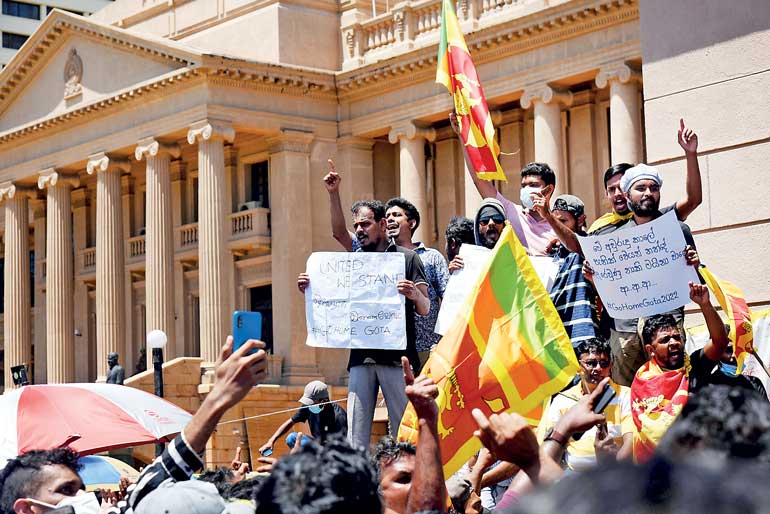A generation caught between disillusionment and survival
In 2022, young Sri Lankans were at the forefront of a historic civic uprising. The “Aragalaya” protests shook the foundations of power and sent a clear message: the youth were watching, and they wanted change. Fast-forward to 2025, and the energy seems to have dissipated. Voter turnout among young people is declining. Political discussions are more cynical than hopeful. Most disturbingly, many simply don’t care anymore.
So what changed? Why has a generation once hailed as the torchbearers of democratic reform now chosen disengagement?
1. A Legacy of Betrayal
The disillusionment isn’t new. Young Sri Lankans have grown up watching successive governments promise transformation and deliver very little. From the Central Bank bond scam to mismanagement of public funds, the erosion of trust has been steady.
The tipping point for many came during the economic collapse of 2022. It wasn’t just an abstract crisis — it emptied their savings, crushed their career plans, and left their families queuing for fuel and food. The political establishment’s response? Infighting, blame games, and minimal accountability.
The result: a generation that feels politically betrayed across party lines.
2. The Economics of Apathy
Political engagement often demands time, emotional energy, and a sense of long-term stake in the nation. But for young Sri Lankans, survival now takes precedence.
With rising inflation, limited job prospects, and a devalued currency, youth are forced to prioritise work, migration plans, or simply making ends meet. Many are freelancing, doing gig work, or working multiple jobs.
When survival is the goal, civic participation feels like a luxury.
3. Social Media: Loud But Cynical
While political disengagement may be visible in formal spaces, it doesn’t mean young people are unaware. In fact, Sri Lankan youth are highly active online — especially on TikTok, YouTube, Instagram, and Twitter.
However, their political content is largely sarcastic, mocking, and satirical. Politicians are ridiculed, not respected. Political drama is consumed like entertainment, not civic duty.
This isn’t ignorance. It’s cynicism.
They care enough to joke — but not enough to hope.

4. After Aragalaya: Hope Meets Reality
The 2022 protests were a rare moment of united civic energy. Young people camped on the streets, organised digitally, and rallied the public. For a moment, it seemed like true change was possible.
But what followed? Arrests. Intimidation. Political musical chairs. No meaningful reform.
This burnout has left many youth feeling emotionally exhausted and deeply disillusioned.
Many now ask: was it worth it?
5. No Space for New Voices
Another reason for disengagement is structural: the political system in Sri Lanka simply doesn’t accommodate young or new voices.
Party hierarchies are rigid and often dynastic. Older men dominate decision-making. Youth wings are largely ceremonial. Parliament has few genuinely young representatives — and even fewer who represent grassroots youth concerns.
The system feels closed. So the youth walk away.
6. Civic Education Has Failed
Sri Lanka’s education system rarely fosters real political literacy. Civic education is theoretical, disconnected from real-world politics, and doesn’t empower students to think critically about power structures, rights, or reform.
As a result, many young people enter adulthood without a clear understanding of how systems work — or how to engage with them meaningfully.
7. Not Apathetic — Just Redirected
It’s important to note: young Sri Lankans are not lazy or apathetic. They are politically aware and care deeply about their communities and the future.
But instead of engaging with political parties, many are turning to activism, entrepreneurship, environmental advocacy, digital media, and grassroots initiatives.
They’re choosing new forms of power over outdated political machines.
8. Migration: Voting with Their Feet
Perhaps the most powerful sign of disengagement is the sharp rise in youth migration. Australia, Canada, the UK, and even the Maldives have seen a steady inflow of skilled, young Sri Lankans seeking stability, dignity, and opportunity.
This is civic disengagement in its most permanent form — not just opting out of politics, but opting out of the country itself.
9. Can the Trend Be Reversed?
Yes — but only with real reform. Here’s what might re-engage the youth:
- Transparent leadership that delivers results, not rhetoric
- Youth quotas in political representation
- De-politicised institutions that build trust
- Digital platforms that allow issue-based engagement
- Civic education reform that empowers critical thinking
- Support for youth-led initiatives at local and national levels
Above all, youth must be heard, not tokenised.
A Generation in Transition
Young Sri Lankans are not abandoning their country — they’re abandoning a broken system. They’ve watched promises shatter and hopes fade. But they still believe in change — just not from the usual suspects.
If Sri Lanka’s political class wants this generation back, they must do more than speak to them. They must give them power, space, and trust.
Because until that happens, this generation will build their futures elsewhere — online, abroad, or outside the political system altogether.





